Abstract
Isolates of Mycobacterium leprae in mouse foot pads were found to differ in two related properties, the average rate of growth between inoculation and harvest (G) and the number of bacilli in the harvest (H). For “fast” strains the median values for G were less than 25 days per generation, and the median values for H were above 106.1. For “slow” strains the median values for G were above 30, and the median values for H were below 105.6. The G and H values for the 59 isolates for which data were available formed a continuous spectrum between the two extremes; there was no correlation with dapsone resistance. The fastness characteristic was stable; it did not change on passage in mice and was in agreement when more than one isolate had been made from the same patient. No important differences were apparent according to geographic origin of the infection of the patient. Histological studies showed that fast strains grew to a higher level without inducing the infiltrate of lymphocytes and macrophages that appears at the end of the logarithmic phase of growth in mouse foot pads. Although fast strains often had higher ratios of solidly staining (and presumably viable) bacilli in the inoculum, the fast-slow difference was not accounted for by the solid ratio. Slow strains differed from fast by having longer times until harvest and by having fewer generations of growth, even when their frequently lower solid ratios were taken into account.
Full text
PDF
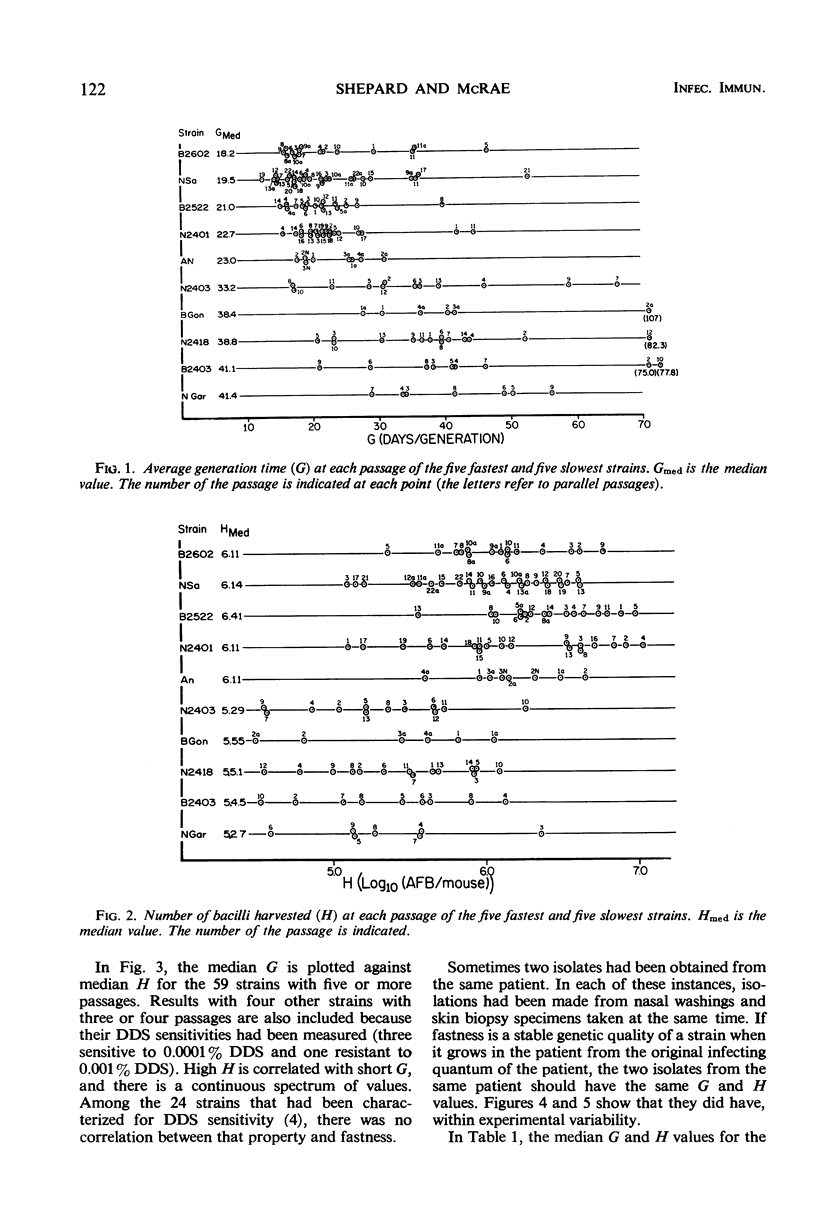
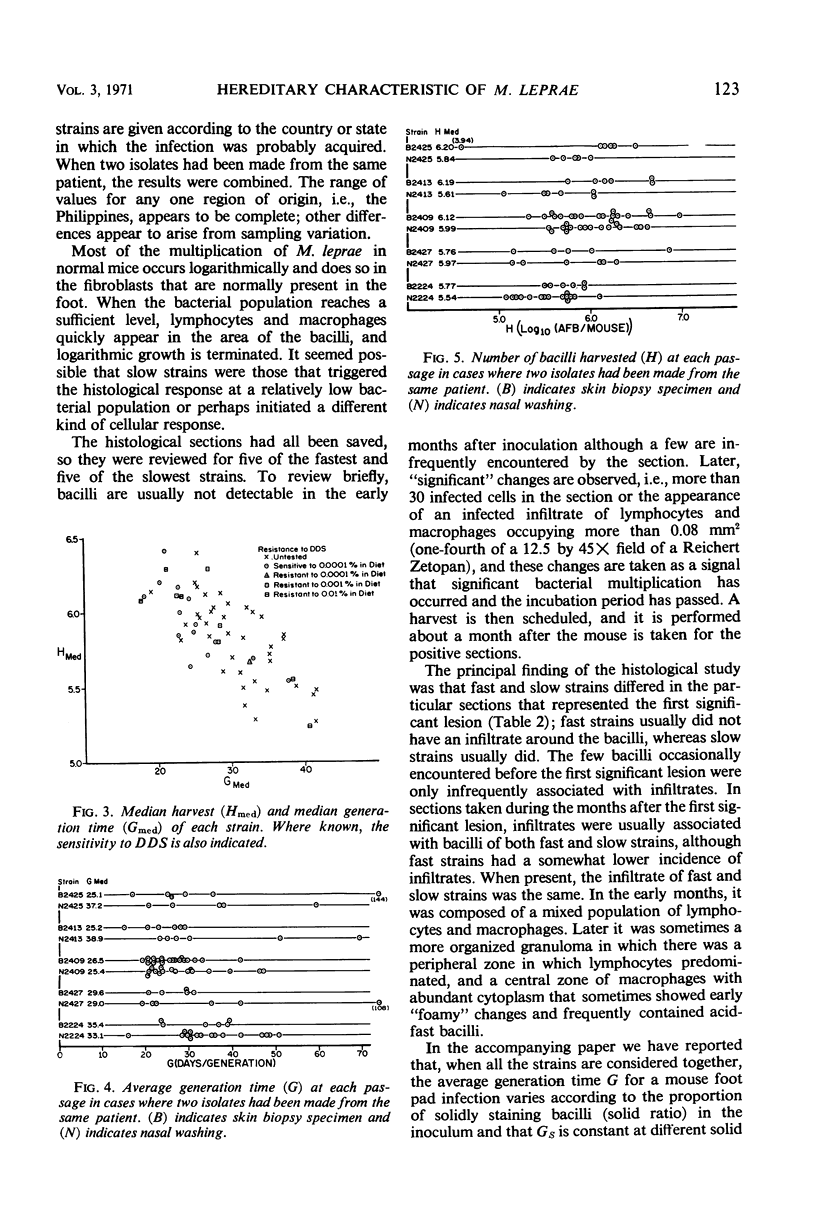
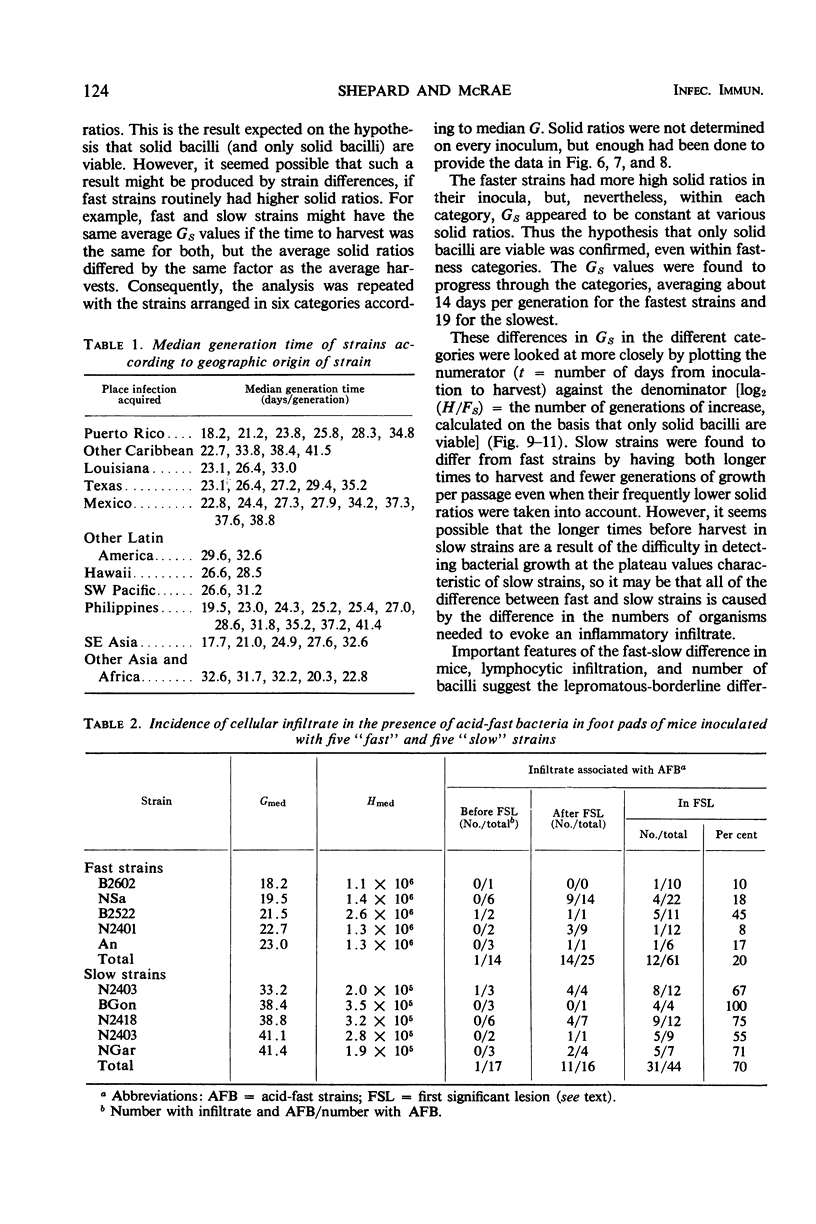
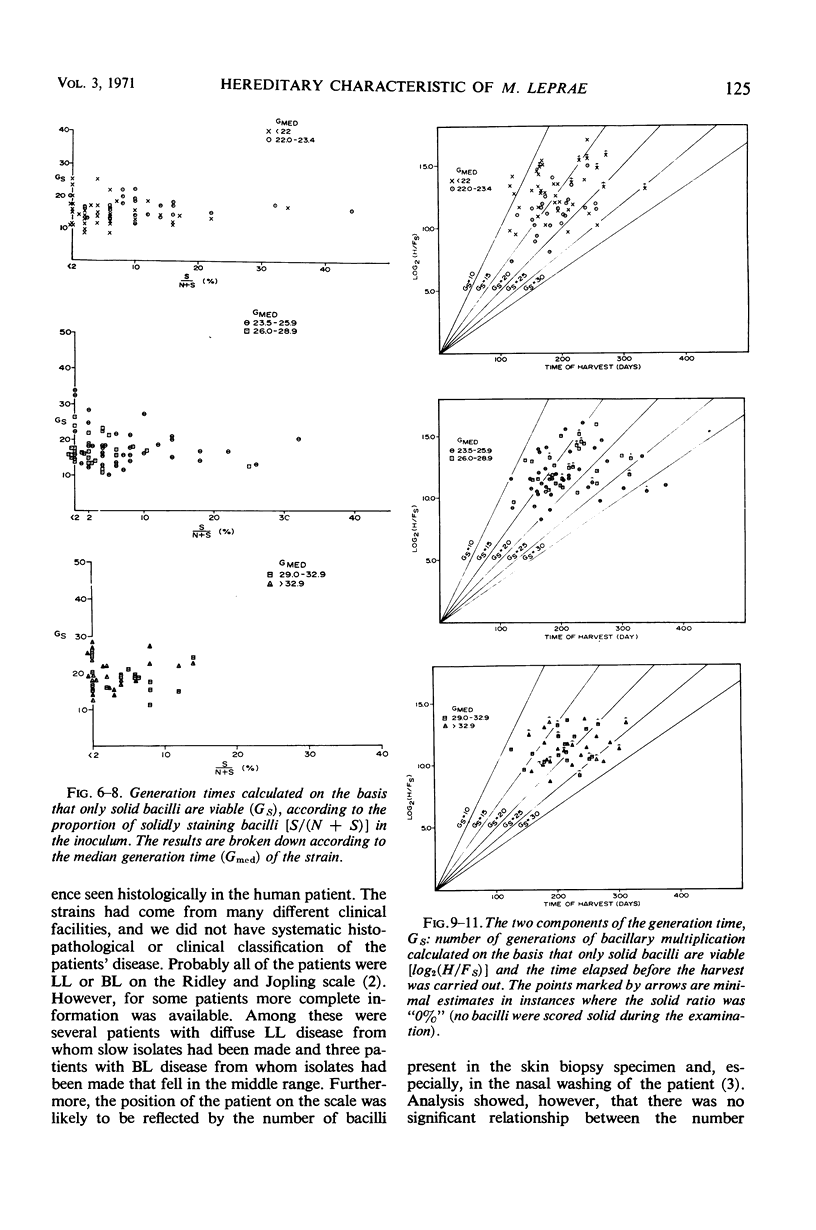
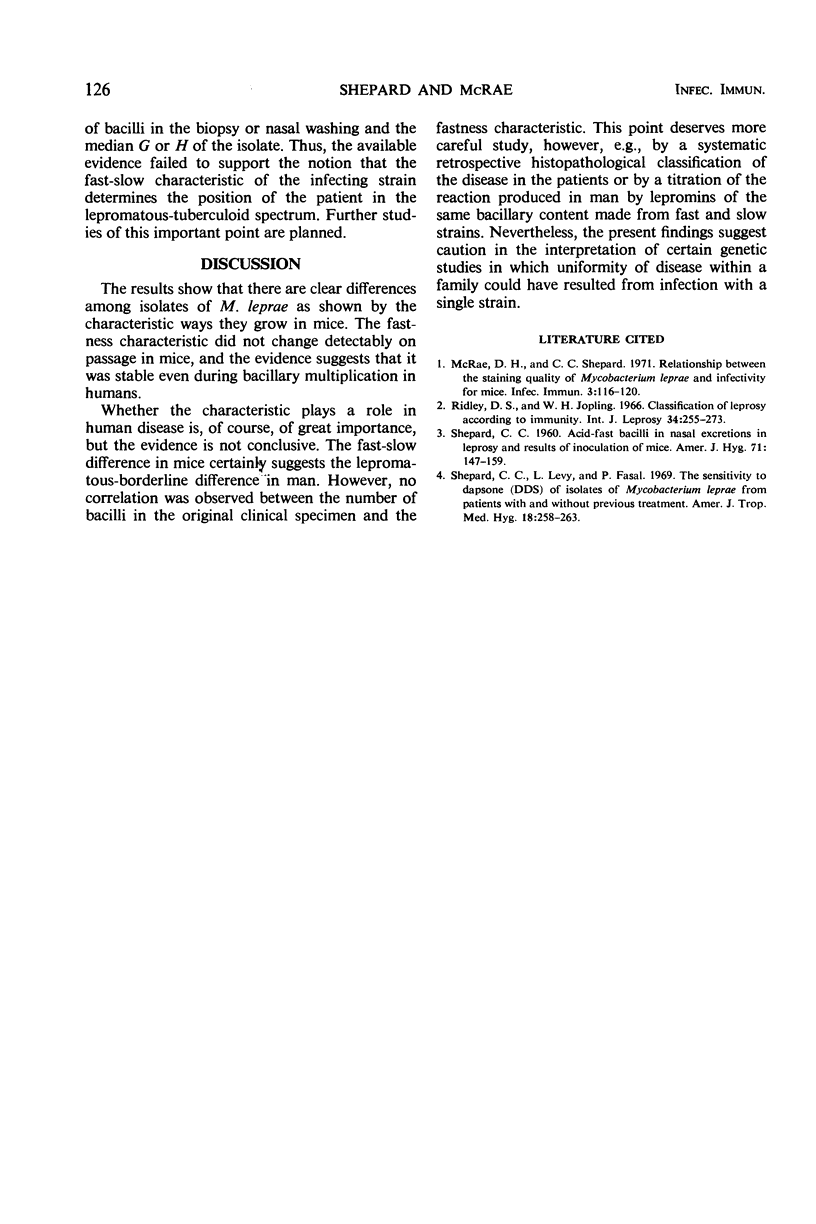
Selected References
These references are in PubMed. This may not be the complete list of references from this article.
- McRae D. H., Shepard C. C. Relationship Between the Staining Quality of Mycobacterium leprae and Infectivity for Mice. Infect Immun. 1971 Jan;3(1):116–120. doi: 10.1128/iai.3.1.116-120.1971. [DOI] [PMC free article] [PubMed] [Google Scholar]
- Ridley D. S., Jopling W. H. Classification of leprosy according to immunity. A five-group system. Int J Lepr Other Mycobact Dis. 1966 Jul-Sep;34(3):255–273. [PubMed] [Google Scholar]
- SHEPARD C. C. Acid-fast bacilli in nasal excretions in leprosy, and results of inoculation of mice. Am J Hyg. 1960 Mar;71:147–157. doi: 10.1093/oxfordjournals.aje.a120098. [DOI] [PubMed] [Google Scholar]
- Shepard C. C., Levy L., Fasal P. The sensitivity to Dapsone (DDS) of Mycobacterium leprae from patients with and without previous treatment. Am J Trop Med Hyg. 1969 Mar;18(2):258–263. [PubMed] [Google Scholar]


